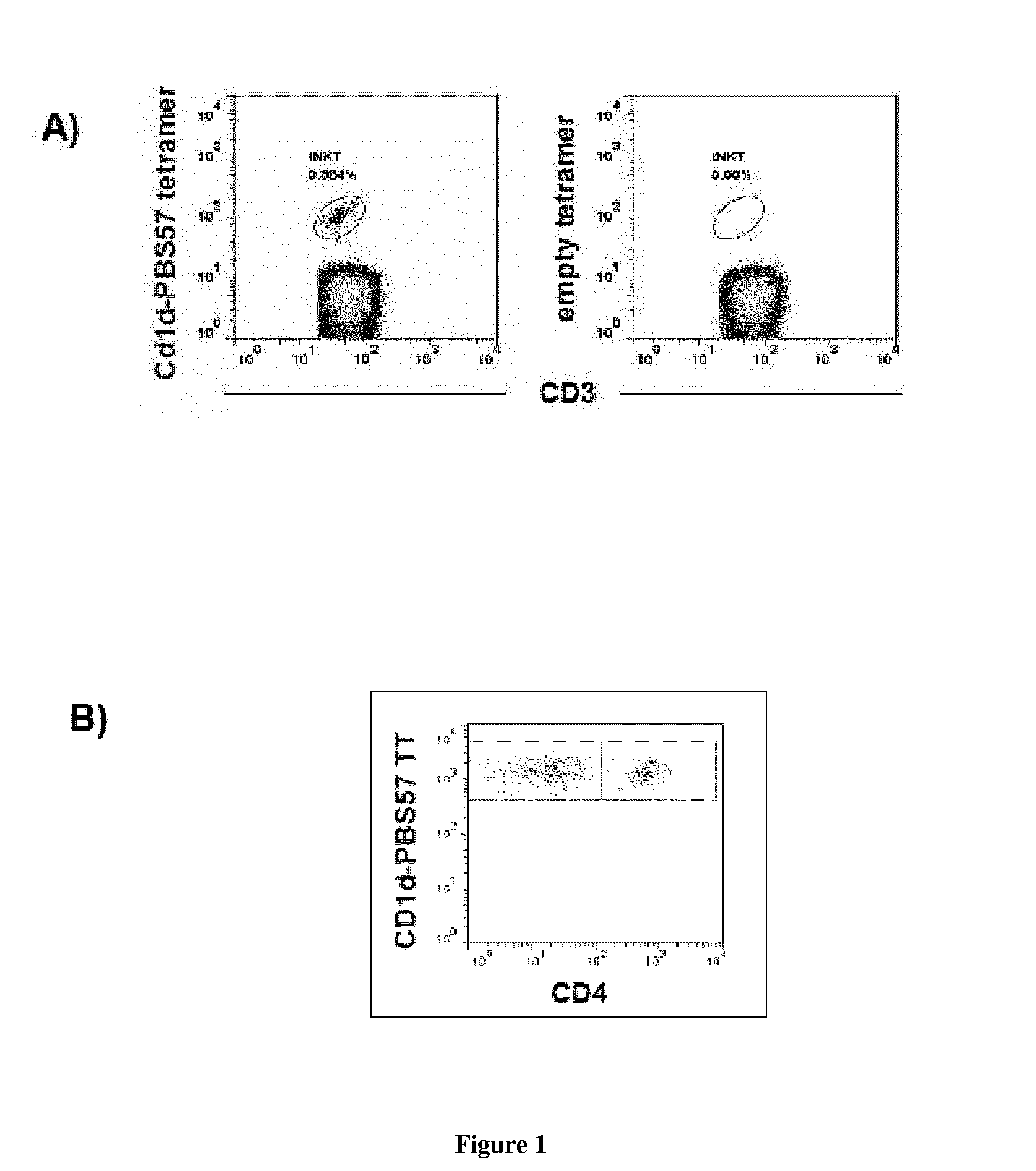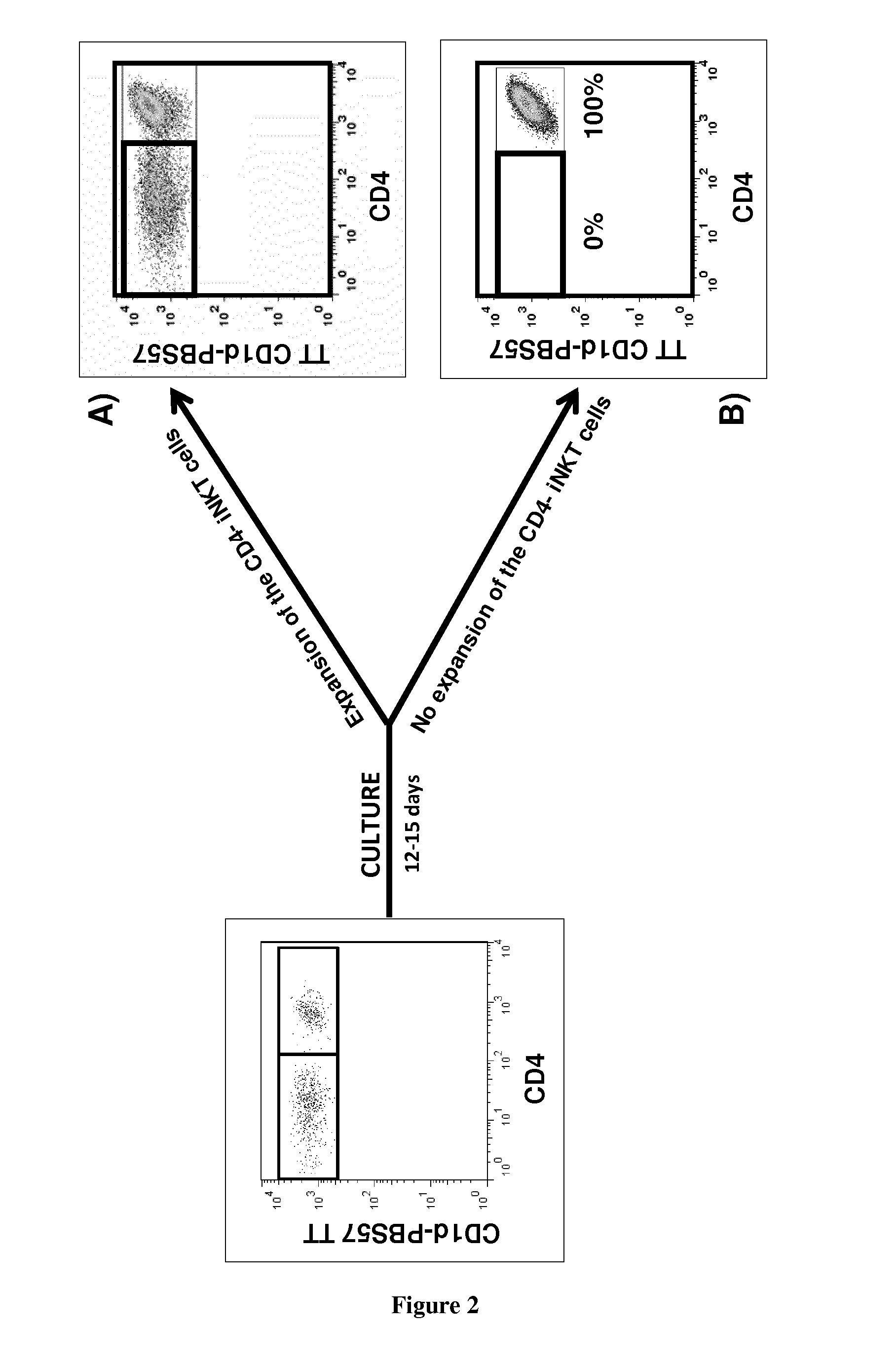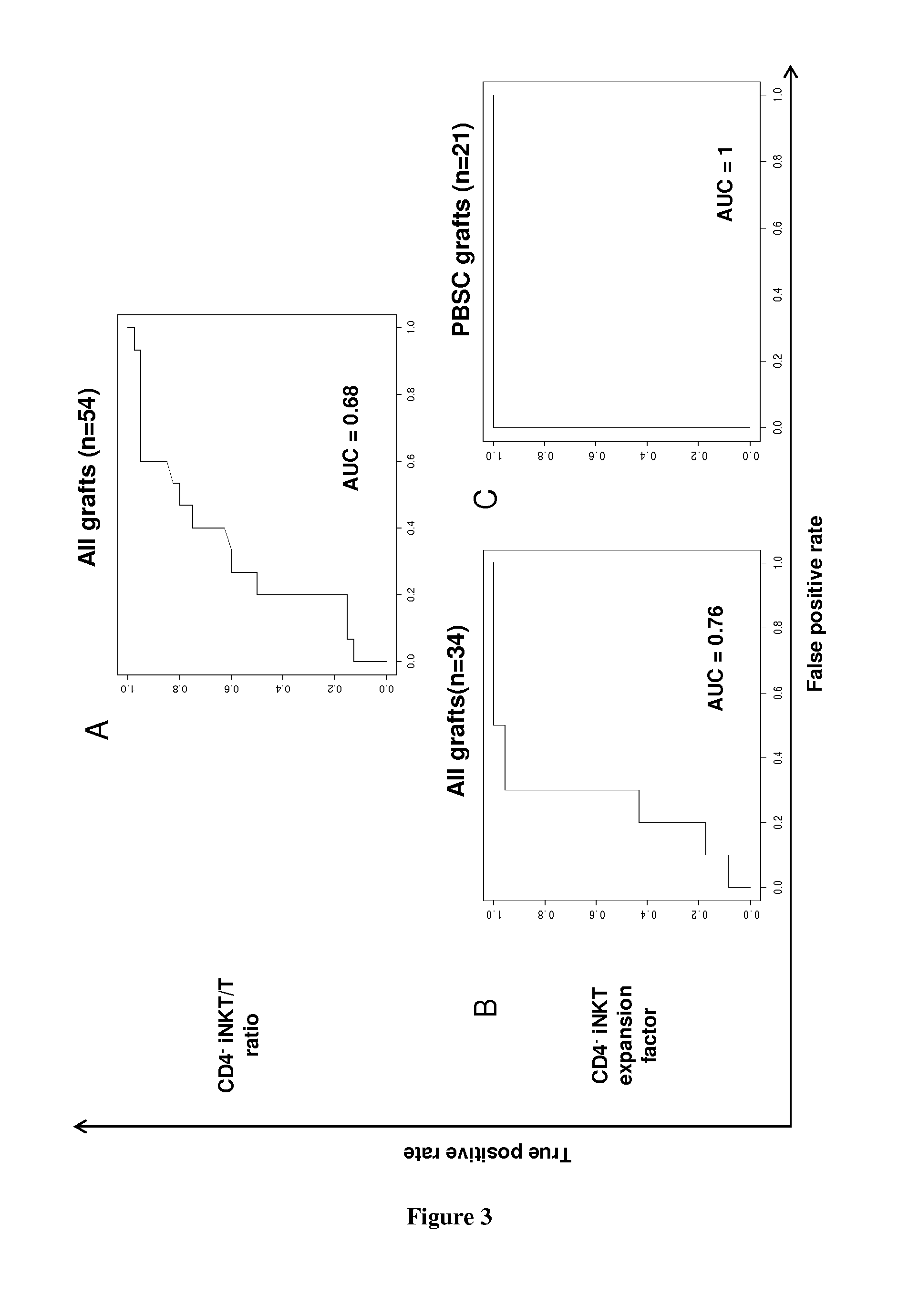Methods for determining the risk of acute graft versus host disease
a technology for determining the risk of acute graft and host disease, which is applied in the direction of antibody medical ingredients, instruments, immunological disorders, etc., can solve the problems of relapse or progression of disease, affecting the overall survival rate after transplantation, and being sometimes refractory to standard treatment, so as to increase the risk of inducing agvhd
- Summary
- Abstract
- Description
- Claims
- Application Information
AI Technical Summary
Benefits of technology
Problems solved by technology
Method used
Image
Examples
examples
Analyses of the Graft Content and the Expansion Capacity of CD4− iNKT Cells from Either the Graft or the Peripheral Blood of HSCT Donors on the Occurrence of Acute GVHD in the Recipient after Transplantation
[0071]Material & Methods
[0072]iNKT Cells Expansion:
[0073]Donors' PBMCs from blood or bone marrow samples are cultured in 24-well plates at a density of 106 cells per well in RPMI 1640 medium containing 100 U / mL antibiotics (Penicillin+Streptomycin), 10% FBS, 2 mM glutamine, and 10 mM HEPES. 100 ng / mL alpha-galactosylceramide (KRN7000) is added at the onset of culture followed, 24 h later, by 50 ng / mL (or 845 UI / mL) of rhIL-2. After 2 weeks, cells are collected, extensively washed, and assayed for their viability by trypan blue exclusion.
[0074]Surface Staining:
[0075]Fresh or cultured donors' PBMCs are analyzed by flow cytometry. Staining of PBMCs is performed at 4° C. for 30 min in the presence of the following directly fluorescently-conjugated monoclonal antibodies: Human CD1d T...
PUM
 Login to View More
Login to View More Abstract
Description
Claims
Application Information
 Login to View More
Login to View More - R&D
- Intellectual Property
- Life Sciences
- Materials
- Tech Scout
- Unparalleled Data Quality
- Higher Quality Content
- 60% Fewer Hallucinations
Browse by: Latest US Patents, China's latest patents, Technical Efficacy Thesaurus, Application Domain, Technology Topic, Popular Technical Reports.
© 2025 PatSnap. All rights reserved.Legal|Privacy policy|Modern Slavery Act Transparency Statement|Sitemap|About US| Contact US: help@patsnap.com



